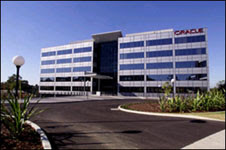My colleague, Saul Cunningham, recently posted his thoughts on SOA and stated how it has to be a strategic play. He also went on to say that organisations who view SOA only within the scope of projects and point-to-point, service-based integration, will not achieve the benefits of a SOA-assisted enterprise architecture.
While I totally agree with his post, and I have seen many service-based integration examples that are not delivering the goods, I would like to focus on the people aspect of SOA. As Saul mentioned, SOA cuts across the organisation and affects many people and their roles. In doing so, SOA requires numerous people to communicate, collaborate and align with each other. The issue I see though if SOA requires such social behaviour, is how do we communicate the concept of SOA and the business value that can be achieved through the approach? I think one of the problems we face as technologists is that while we might understand concepts such as SOA, we struggle to have that business discussion. We fail to, on the one hand understand the challenges the business folks are trying to resolve and secondly we speak to them in context that they do not understand.
I felt this first hand at the recently held Insync09 conference. The majority of delegates I met were mostly applications managers, functional specialists and business analysts. I conducted an impromptu experiment to gauge what language would work with organisational profiles such as these folks, as traditionally their role in an organisation would be to ascertain the scope of a business issue, resolve it through applications and then integrate them. When asked by some folks what is SOA and how SOA could help; I spoke about the business agility, flexibility and service reuse benefits. Their eyes glazed over, which was expected. The conversation had no context to their world. There was nothing in it for them.
I then had the chance to present with Debra Lilley, an Oracle ACE Director and Deputy Chair of the Oracle User Group UK. We tackled a potential issue applications managers face, namely how processes such as order to cash could be extended beyond the traditional border of a business application. So we got them to think about the need for enterprise process, the services that already exist in available applications, and the need and benefits of moving away from point-to-point integration. Using a demonstration, the message went down very well as the delegates understood how their particular point of reference could change for the better. Debra was interviewed at the conference after our session, and explains the analogy she uses when trying to explain SOA and where she feels SOA can help applications specialists.
SOA purists might balk at the conversations we had, but I realised that while many of us understand how SOA can impact an enterprise architecture and support transformation initiatives and the greater business strategy, individuals impacted by any level of transformation require a conversational scope and approach that will contextualise the change to their frame of reference. In other words, what is in it for them.
The Oracle Australia and New Zealand Middleware and Technology Blog.
Thursday, April 30, 2009
Subscribe to:
Post Comments (Atom)


No comments:
Post a Comment